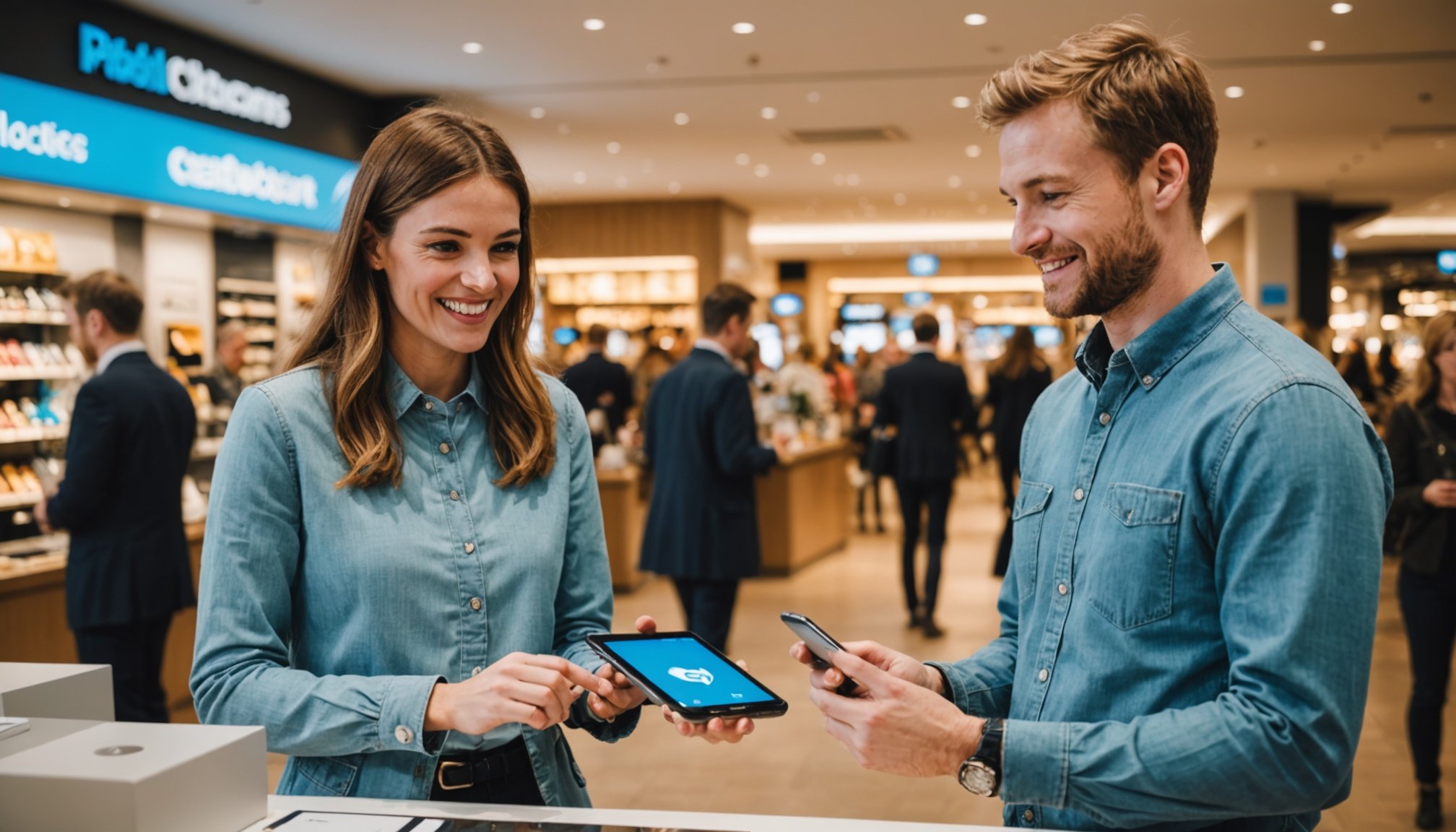Overview of Chatbots in Retail
Chatbots have significantly revolutionized the retail customer experience by providing a seamless, efficient alternative to traditional customer service methods. These AI-driven tools have evolved over the years from simple programmed responses to sophisticated, conversational interfaces capable of understanding and responding to a wide range of customer queries.
According to recent statistics, more than 70% of retail businesses are projected to implement chatbots by 2025. This surge underscores the growing importance of chatbots in retail. Their use not only enhances engagement but also boosts service efficiency by automating repetitive tasks. Surveys reveal that retailers leveraging chatbots experience an impressive 35% increase in customer satisfaction rates.
Also to read : Key Strategies for Effective Credit Risk Management in UK Finance: Unlocking Success for Financial Institutions
In today’s fast-paced retail environment, chatbots improve customer service efficiency by offering 24/7 availability, ensuring that customer queries are addressed promptly, irrespective of time zones. Chatbots can handle multiple interactions simultaneously, reducing wait times and allowing human representatives to focus on more complex issues. This dual approach ensures comprehensive customer care while streamlining operations, thus significantly improving the overall retail customer experience. Embracing chatbots in retail paves the way for a more personalised shopping experience, as these virtual assistants learn from interactions to tailor responses uniquely to each customer.
Case Studies of Successful Chatbot Implementations
Exploring chatbot case studies provides valuable insights into the transformative impact these tools have on the retail sector. Prominent retailers like Sephora and H&M have harnessed chatbots to streamline customer interaction and drive business outcomes. Sephora employs chatbots for scheduling makeovers, thereby enhancing customer convenience while improving appointment efficiency. Similarly, H&M’s chatbot assists customers with fashion advice and outfit suggestions, which boosts engagement and satisfaction.
Also to discover : Harnessing Alumni Power: Innovative Approaches for UK Universities to Maximize Online Networking Tools
Leading Retailers Using Chatbots
Leading retailers utilise chatbots to enhance the retail customer experience significantly. They achieve this by offering prompt responses and personalised recommendations. By analysing purchase history and preferences, these chatbots curate bespoke suggestions. Such tailored experiences foster customer loyalty and drive repeat purchases.
Impact on Sales and Customer Loyalty
The integration of chatbots has led to notable increases in sales and customer loyalty. Following implementation, retailers observed a 25% uptick in conversion rates. The retail success stories reveal the power of instant, efficient customer service provided by chatbots, which ultimately satisfies and retains more customers.
Customer Feedback and Engagement Metrics
Customer feedback indicates high satisfaction with chatbot interactions, particularly due to the quick solutions and personalised experiences offered. Engagement metrics show that over 60% of customers prefer using chatbots for queries, highlighting the growing acceptance and reliance on this technology.
Benefits of Chatbots for Customer Experience
The integration of chatbots in retail has led to remarkable improvements in customer satisfaction. By offering 24/7 availability, these tools ensure instant response times, significantly enhancing retail efficiency. Shoppers no longer need to wait for business hours to resolve queries, creating an always-on environment that fosters customer trust and satisfaction. This is achieved by chatbots’ capability to handle several interactions simultaneously, thus cutting down on operational costs.
A key benefit of chatbots is their ability to personalise and tailor interactions according to individual customer preferences. By leveraging AI in retail, chatbots can analyse past purchases and behaviours to offer bespoke experiences, creating a sense of special attention and boosting customer loyalty.
Furthermore, automation plays a vital role in reducing costs. Chatbots can manage routine inquiries and processes, freeing human representatives to address more nuanced issues. This balances workload efficiently, leading to reduced staffing requirements and streamlined operations.
By prioritising these aspects, chatbots not only redefine customer interactions but also contribute substantially to improving the overall retail customer experience. As technology progresses, the potential for further personalised and efficient retailing through chatbots continues to expand.
Challenges in Implementing Chatbots in Retail
The transition to using chatbots in retail comes with its own set of challenges. One major hurdle is the technical complexity involved. Integrating chatbots with existing systems often requires significant technological overhauls, which can be both time-consuming and costly. This technical barrier further complicates the seamless incorporation of AI technology into retail operations.
Miscommunication between customers and chatbots can lead to negative experiences, undermining customer trust. This risk stems from limitations in language processing and context understanding, where chatbots might misinterpret customer queries or provide inaccurate responses. Such experiences can detract from the retail customer experience, highlighting the necessity for well-designed conversational AI systems.
Resistance to adopting new technologies poses another substantial challenge. Both staff and customers might be hesitant to embrace chatbots due to unfamiliarity or scepticism about their effectiveness. Bridging this gap requires careful change management strategies that involve educating staff on the benefits of chatbots and demonstrating tangible improvements to customer service.
Addressing these implementation barriers ensures a smoother transition, enabling retailers to enhance their operations and customer interactions through effective chatbot solutions. By prioritising robust integration strategies and user acceptance efforts, retailers can surmount these challenges.
Best Practices for Integrating Chatbots in Retail
To successfully integrate chatbots into retail operations, focusing on best practices is vital. Retailers can create a more effective retail customer experience by adopting strategic solutions.
Designing a Customer-Centric Chatbot
A customer-centric chatbot prioritises user needs. Designing such a chatbot involves understanding customer preferences, ensuring intuitive navigation, and providing relevant service options. Personalisation is essential, using AI in retail for tailored interactions, leveraging data on customer history to enhance service delivery.
Training Staff for Chatbot Interaction
Staff training is crucial in maximising chatbot benefits. Properly trained personnel can troubleshoot issues and assist in complex scenarios beyond a chatbot’s scope. Training should focus on understanding chatbot limitations and leveraging their strengths to support a seamless customer experience.
Monitoring and Improving Chatbot Performance
Continuous monitoring is key in enhancing chatbot performance. Regularly reviewing analytics on usage patterns and customer feedback helps identify improvement areas. Implementing iterative improvements ensures chatbots evolve alongside changing consumer needs, maintaining their effectiveness in the dynamic retail landscape. Implementing these best practices allows retailers to optimise chatbot implementations, ensuring they contribute positively to the retail customer experience.
Industry Trends in Chatbots and Future Outlook
In the rapidly evolving world of retail, chatbots are becoming increasingly essential due to significant advancements in technology. Notably, the integration of Natural Language Processing (NLP) and Machine Learning (ML) has paved the way for chatbot innovation. These AI developments empower chatbots to comprehend and respond more accurately to human language nuances, thereby elevating the retail customer experience.
The future role of chatbots in retail is expected to expand dramatically. By 2030, it’s anticipated that chatbots will not only assist with customer support but also engage in more nuanced roles, such as virtual shopping assistance and inventory management. This burgeoning functionality will likely redefine the retail landscape, making it more efficient and dynamic.
Emerging consumer expectations include a demand for seamless, immediate service and tailored shopping experiences. As these expectations evolve, chatbots will need to adapt to provide increasingly personalised interactions. For example, by analysing real-time data, future chatbots might offer customised promotions or product recommendations based on individual preferences.
Ultimately, continual advancement in AI will further cement chatbots as an integral component of retail, ensuring their relevance in meeting modern consumer needs efficiently and effectively.











